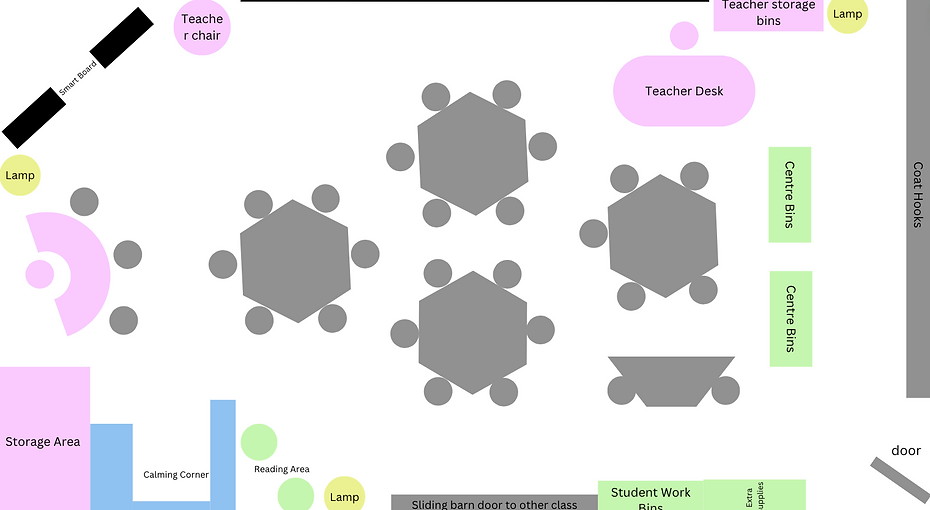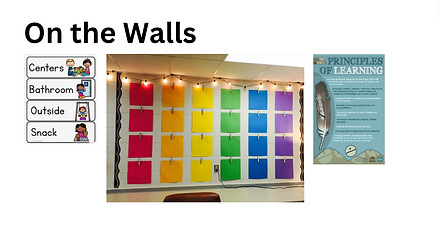
Environmental Footprint
The layouts above are an accurate representation of how I envision the set-up of my classroom environment. Within my classroom, I have positioned seating, centres, and bins strategically to suit the needs of my classroom. This classroom is connected to the other grade 2 classroom through a storage area for the teachers and by a barn door that opens in the middle of the classroom.
The desk seating is in groups leaving a space on the floor for students to gather when we have a sharing circle or have students sit in front of the smart board on the learning floor. My philosophy centres around me wanting to make students empathetic and compassionate individuals. By grouping students together, it can help achieve this by allowing students to work with their peers and invite collaboration into the classroom. As well, I believe that communication and collaboration with peers is extremely important at this developmental stage. Developmental theory states that around the age of 7 and 8, children love group activities and cooperative work with a partner or group of partners (Wood, 2017). Having small groups encourages and facilitates this communication between peers.
In these table groups, I will have students sitting in a seating arrangement. However, during centre time, they will have the ability to choose which centre they engage with that has been introduced. Developmental theory states how students during this age will start forming friends and stick to those friends (Wood, 2017). By assigning their seating, it ensures no child is left out and it can get them communicating with other peers in the classroom. My philosophy draws on the humanistic approaches such as Reggio theory. Reggio theory views the environment as the third teacher and emphasizes play to engage students in learning (Crawford et. al, 2022). As well, Reggio theory emphasizes children as strong and competent for their own learning. Because of my belief in Reggio theory, setting the physical environment in a way that promotes student choice in centres and play helps promote this theory within my classroom.
In addition, much of the student storage will house materials for centres. These centre bins are in areas that students can grab them during centre times of the day. This organization system will have to have explicit teaching at the beginning of the year to help students understand the routines. Once they understand this routine, they can have the responsibility to pull centres themselves since I believe they are competent individuals. Also, at the back of the room, there will be shelves for student work to be stored and other materials that they may need, such as pencils, scissors, erasers, etc.

On the walls, I think most that is displayed must relate to what we are doing within the curriculum at the time. I would have displays set up like the middle image on the left, that allows for student work to be taken down easily and exchanged for new work, using clothes pins. On the walls, I want student work to be the majority of what is displayed.
As well, I would have visuals displayed that I think are important for regular routines such as a visual schedule. In addition, I would have Indigneous Principles for Learning, which would be referred back to often when teaching.
Which TQS points I hit within my environmental footprint
1. Fostering Effective Relationships
2. Engaging in Career-Long Learning
3.Demonstrating a Professional Body of Knowledge
4.Establishing Inclusive Learning Environments
5. Applying Foundational Knowledge about First Nations, Métis and Inuit
6.Adhering to Legal Frameworks and Policies